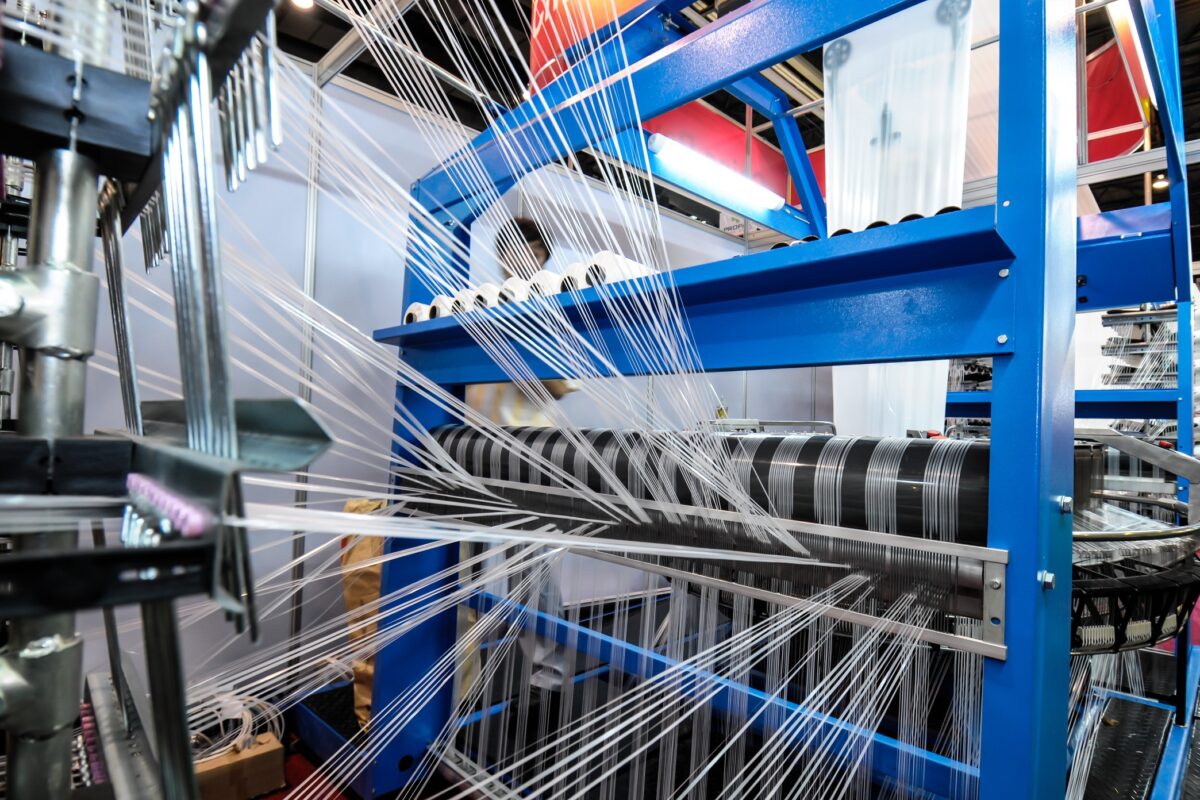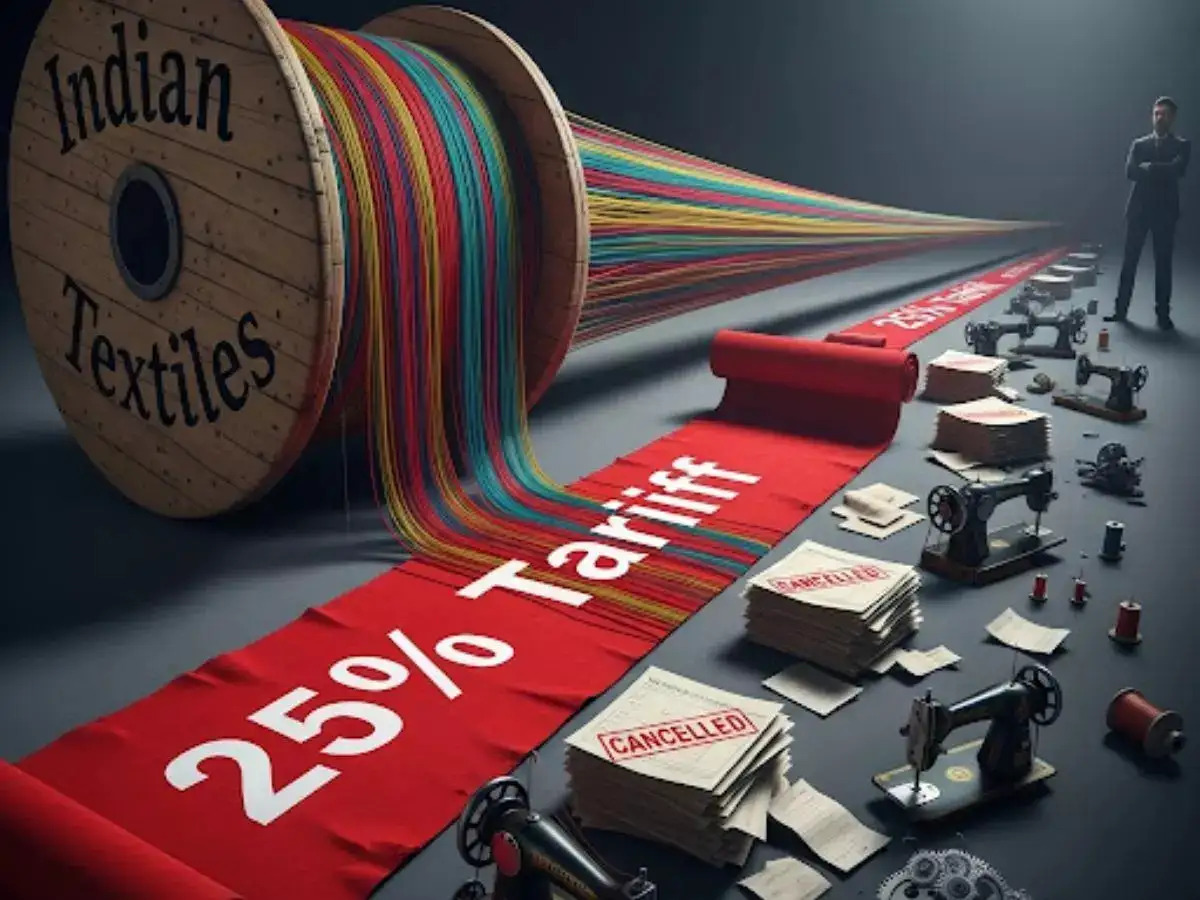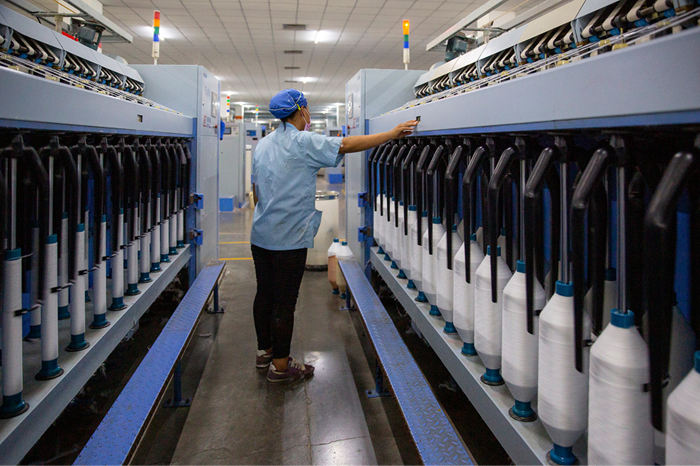FW
"The evergreen fashion icon of all seasons, denim has sustained itself in the ever expanding apparel segment. Riding on innovative experimentation with fits, colours and styles, denim has been a consumers’ delight. And R S Singh, Business Head, Blue Blends India points out the Indian denim industry will grow continuously in the years to come. “This is supported by the fact that denim is best suited for the Indian climate. There are other fabrics like polyester, viscose etc but denim is the best in the cotton segment for fashion,” he opine."

The evergreen fashion icon of all seasons, denim has sustained itself in the ever expanding apparel segment. Riding on innovative experimentation with fits, colours and styles, denim has been a consumers’ delight. And R S Singh, Business Head, Blue Blends India points out the Indian denim industry will grow continuously in the years to come. “This is supported by the fact that denim is best suited for the Indian climate. There are other fabrics like polyester, viscose etc but denim is the best in the cotton segment for fashion,” he opines. Within cotton, denim is vastly accepted, versatile and most innovative fabric. This is reason demand for denim would continue to grow. “Currently the Indian denim industry stands at 1.2 billion metre per annum. It is still growing and growing at a very fast rate. The future is not very easy to predict, but one thing is certain, there is enough growth in demand and supply both. The demand for denim products is growing anywhere between 12-15 per cent per annum. It is likely grow in the same pace,” he explains.
Tracking demand trends

Sing says denim has created space for itself by replacing existing products and this caused a dramatic growth in the sector. Especially, in the last 10-15 years, denim has gained a momentum. “If we break this 30 years’ period into two halves, growth rate was far better and faster in the second half compared to the first. In the first half, growth was not much because people were not aware about the product, technological advancement was low, and sources of information were scarce. In every respect, it was a phase of less advancement. Then the markets were also warming up to it. So, these 30 years can be summed up by describing the first half as period of consolidation and second half as period of growth,” Singh explains.
Surmounting challenges
The challenge for the industry he says is the demand-supply gap. The industry is facing oversupply issues. Demand is growing but supply has been growing more than that for the last 5-6 years. Production is constantly growing for the last 15 years. The second reason is government policies on technological upgradation and advancement, which speeded up the pace, though the demand is the primary reason for growth, growth has always been followed by demand. Demand supply gap has caused profitability issues and competition increased. But there is a bright side to competition as it helps improve practices in the industry in every respect and fosters innovation and creativity. “About a decade ago, very few mills would try to tap overseas markets, especially new ones. Because supply gap was so big that it was much more profitable to sell domestically. There was hardly any motivation to go overseas,” Singh avers.
Added to that, Singh informs, labour and pollution norms are very stringent in India. Sustainability is important but the approach is not correct. Nowadays, a person starting his business ends up spending more on following norms compared to actually putting the business together. The government can identify a space or a hub for the particular purpose, with the entire infrastructure and eco-friendly measures in place. Singh agrees feels policies are there but how effective and efficient they are is a key question. The market is still immature and is not demanding. If one offers quality, customers will ultimately come to you. “India is still at fashion infancy and we are learning by experiments,” he sums up.
Adidas Outdoor, the athletic brand for performance outdoor apparel, footwear and accessories, has announced the debut of an expanded Parley for the Oceans apparel line with performance outerwear for men and women. The line will be on display at Outdoor Retailer Snow Show 2018, to be held from January 25 to 28, 2018, in Denver, Colorado.
The brand will introduce next generation design and innovation with variations on traditional baffles for increased warmth and protection and pair unlikely textiles and styles for hybrid look. Greg Thomsen, Managing Director, Adidas Outdoor says, “The expansion to performance outerwear with Parley for the Oceans is a natural progression. The Parley styles blend well with the rest of the collection, as the lines between fashion and function continue to blur. Consumers want apparel that not only functions, but looks great. The fall/winter 2018 line looks great on a winter hike or a five-city block trek.”
Parley jackets and parkas feature recycled polyester fibre made from reclaimed ocean plastic and Climaproof, the Adidas’ proprietary waterproof breathable technology providing protection and comfort in wind, rain, or snow. Styles include the men and women’s Parley 3-Layer Jacket and Swift Parley 2-Layer; and the women’s only style, the Clima Parley Parka.
Adidas entered a partnership with Parley for the Oceans in 2015, an environmental organisation and collaboration network that raises awareness for the beauty and fragility of the oceans and implements comprehensive strategies to end plastic pollution in the ocean.
Adidas Outdoor fall/winter 2018 turns to urban fashion for design inspiration. Minimalist styling, matte fabrication and fashion colour ways are showcased in much of the collection, while hybrid combinations provide greater function and fashion-forward silhouettes.
Knitwear exporters in the Tirupur cluster are disappointed over the inadequate allocation of funds in the union budget for Rebate of State Levies (ROSL) for garment exports, a key scheme introduced on September 20, 2016. The allocation is not seen as enough since total apparel exports from the country between October 1, 2016, and March 31 this year was around Rs 53,000 crores and an average rebate of three per cent would itself work out to Rs 1,590 crores. Added to that, made-up articles have also been included now to avail of the benefits under the ROSL scheme.
Similarly, they are concerned over the lack of thrust given to adequately fund the Pradhan Mantri Rojgar Protsahan Yojana, a scheme that was envisaged during 2016-17 financial year to incentivise employers for generating employment. At the same time, industrialists and technocrats are cheerful over the focus given in the budget to enhance the viability of micro, small and medium-scale enterprises and start-up ventures by giving sops like income tax reduction and exemptions.
For micro, small and medium enterprises, the budget proposes to reduce the income tax slab from 30 per cent to 25 per cent for annual turnover up to Rs 50 crores. This move is expected to make the Tirupur cluster, which is predominantly made up of medium and small units, vibrant.
Texworld Paris will take place from February 6 to 9, 2017. The show will see 730 exhibitors, all of whom are weavers. Among them, for are weavers from Egypt, a country specialized in cotton fabric production. Most exhibitors are from China, followed by Turkey (87 exhibitors) and Korea with 71 exhibitors. India too participates with 53 exhibitors, while Taiwan has 26 and Pakistan has 19 companies.
A series of lectures about latest developments in the sector, news from exhibitors, catwalk shows and the Trends Forum area will be offering a varied and imaginative program, fueling visitors with new ideas and inspiration for their work. Elite, the segment dedicated to customized solutions, will present its second show hosting 21 exhibitors. The majority will present specialist offers adapted for European markets.
The show will also host the third edition of Frankfurtstyleaward, an international fashion competition that has been promoting young designers since 2007. Simultaneously other shows will also take place – Apparel Sourcing and Avantex. Apparel Sourcing will offer a variety of solutions for clothing and accessories production. It will host more than 300 exhibitors from China, Bangladesh, Pakistan, India, Myanmar and Guatemala.
Avantex will present a selection of innovative textiles and materials. These include an instant dyeing machine for embroidery and robotic mannequins to be employed for pattern making.
MAS has become the first company from Sri Lanka to join the ZDHC program. ZDHC is aiming to achieve zero discharge of hazardous chemicals in the textile and footwear value chain. The new partnership makes way for both MAS and ZDHC to create a positive impact across the group’s value chain and is aligned with the company’s own sustainability plan which includes an ambitious internal goal to reduce hazardous chemical use in its manufacturing processes, products and its own supply chain by 2025.
MAS is one of the world’s most recognized design-to-delivery solution providers in the realm of apparel and textile manufacturing. It has 50 manufacturing facilities across 15 countries, and design locations in key style centers across the globe. Over 88,000 people are involved in its operation.
The group has expanded its product portfolio to bras, shape wear, performance wear, sleepwear, swimwear and active wear as well as its own fabric supply chain. The customer portfolio includes brands such as Victoria's Secret, Nike, Lululemon, Calvin Klein, Marks & Spencer, Patagonia, Speedo and others.
MAS Holdings is driving a culture of sustainability among its workforce, 70 per cent of whom are women. Now the apparel conglomerate is broadening its mandate by seeking out greater collaboration on projects that will position Sri Lanka as a hub for sustainable manufacturing.
American sportswear brands are beginning to experiment with manufacturing at home. What they do is limited run collections that test both the process and the prices that customers are willing to pay for domestic goods. Often, the manufacturing processes that are being utilized in the US are new technologies that aim to disrupt decades-old processes. Disruptive because the broader sports industry still makes a vast majority of goods abroad, mostly Asian nations. Local manufacturing is seen as competitive as it allows products to be made at a tighter timeline and for a local audience. The aim is to bring jobs back to America and to tighten American brands’ supply chains around the world.
Under Armour is one such brand. It’s the second largest sports brand in the US. It’s committed to designing and manufacturing apparel and footwear out of a 35,000-sq. ft. facility that opened last year.
Under Armour isn't the only sports brand that is experimenting with US-made processes. Adidas plans to build a 74,000 sq. ft. production factory that would focus on running footwear. It is expected to be fully functional in the second half of 2017 with an initial targeted production of 50,000 pairs of shoes this year. Reebok is also bringing some manufacturing capabilities to the US. It plans to open a manufacturing lab that relies on futuristic liquid material and 3D drawing.
The Kenyan garment sector remains relatively small, with just 40,000 workers. But if the African Development Bank gets its way, this is set to change. In 2015, it launched an online business platform designed to boost small businesses in the fashion and textile industry. The bank believes the sector could generate 4,00,000 jobs in sub-Saharan Africa by 2025.
In Kenya, like many other African countries, the domestic textile industry has suffered because of the race to the bottom by global brands seeking out low-cost labor. Most artisans are trapped in domestic markets without links to international trade. Now some companies are trying to challenge this norm by sourcing artisans from marginalised communities to produce their fashion lines. There are initiatives that connect Kenyan artisans to luxury brands such as Vivienne Westwood and Stella McCartney in a bid to pull high fashion houses away from mass production factories.
Community groups, recruited from existing networks like self-help and women’s groups, produce 1,00,000 units a year, mostly bags and accessories. A portion of the profits will be reinvested into further training, as well as providing support to families, for instance, through improved childcare facilities.
There is another initiative which enlists established western designers with an existing client base to come up with designs for traditional artisans in Kenya to produce. The hope is this will ensure a sustainable market.
Italian producers of knitting yarns are seeking new clients and new markets on the strength of craftsmanship, creativity and innovation. Over the past few years, the high-end market segment has been penalized by Russia’s difficulties and China’s consumption crunch.
In 2016 turnover for Italy’s yarn industry was down largely due to a drop in exports while imports grew. A decrease in exports is predicted for 2017. Fashion trends do not favor knitwear and the US is not doing well in the retail sector. Some customers have been wiped out by recession. Others are having a hard time and have reduced orders.
So luxury companies have repositioned themselves in a slightly lower segment. Fancy yarns are an increasing focus for Cariaggi, which specializes in high-end carded and combed yarn. Lineapiu has presented a yarn mixing paper and polyamide fiber, providing an organdy effect that recalls Japanese washi paper, used in origami. This type of yarn is seen as broadening opportunities for the fashion industry. Lineapiu will launch 3D fashion components to recoup in 2017 the loss suffered in the US last year.
For Pecci Filati exports are 65 per cent of its turnover. The company launched a new brand Filati Naturali two years ago.
Dutch denim brand G-Star Raw is using Bluesign components in its collection, from zippers and rivets to labels and linings. Bluesign is a sustainable technology provider. G-Star Raw will launch Bluesign products this year. Components will be sourced from Bluesign-approved suppliers and produced according to Bluesign criteria. G-Star has already introduced the fabric into its supply chain.
In 2017, G-Star also plans to begin launching a new sustainable production innovation every other year. The innovations will be based on either materials or washing levels—steps that will help close the loop in denim. In 2013, G-Star was the first denim brand to join Bluesign and allowed the sustainability solutions provider to set the standard for responsible chemical use. In 2015, the brand partnered Calik, the first Bluesign denim mill. One year later, G-Star and Calik debuted the first Bluesign-approved denim fabrics, which are in the market now.
G-Star combines Bluesign’s chemical use guidelines with support from the ZDHC Foundation and its own individual action plan, which entails a team of technical engineers working with G-Star’s 28 key suppliers (50 per cent have been partners for over ten years) to clean up their chemistry. The brand sees this as a challenge to detox its denim processes and the industry.
Copenhagen Fashion Week is being held from January 31 to February 3. The two big fashion fairs, CIFF and Revolver, are running from February 1 to 3. CIFF is holding its biggest fair to date, peppered with a promising line-up of brands and agencies and a comprehensive program of special projects and collaborations, including installations. CIFF is also hosting a roster of fashion shows by Danish designers.
The show’s Raven and Raven Projects area houses a selection of global menswear, with highlights such as Cottweiler, Phire Wire, Xander Zhou and Axel Arigato. Japanese retailers have brought several brands to the show and Los Angeles-based street wear brand 424 is displaying a collaborative collection including clothing, but also candles, perfumes, posters, bags and tools.
Revolver is presenting a variety of new brands this season, including Swedish brands, Kings of Indigo from the Netherlands and four new Danish brands. These will join Scandinavian favorites such as Soulland, Saks Potts, Whyred and Mads Norgaard Copenhagen. For the second time, Revolver is hosting a mini-edition of White Milan. White Inside Revolver presents a selection of Italian brands including names such as PDR Phisique du Role, Corelate, Nine In The Morning, OOF, Delirious, Virginia Bizzi, Aalto, Sides Wow and Oc Lab.












